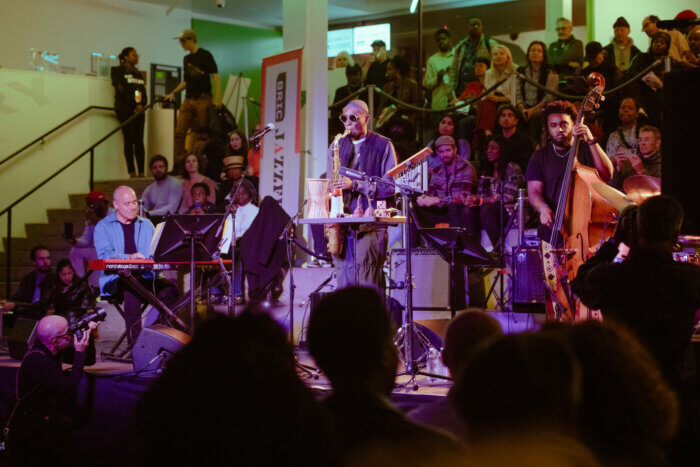Artists and music lovers explored the ever-evolving boundaries and themes of jazz music through performance and conversation at the ninth annual BRIC JazzFest last weekend.
When preparing for the yearly music show, organizers wanted to invite artists who could move the conversations of what jazz is and what it should be in the future, according to Wes Jackson, president of BRIC.
“We’re fighting to reclaim the identify as [jazz] is many things,” Jackson said. “We can take this sort of ethos of challenging who decides what art is, who decides what it is not, who makes these rigid categories which defy intellect.”
The three-day music festival kicked off on Oct. 19 with a panel that discussed the intersections of jazz and hip-hop. Panelists led conversations on how collaboration between both genres spotlights the similarities and differences in each art form. The next two days of the festival showed off that collaboration in action, with a dozen artists varying in style, age, experience and cultural backgrounds.

According to Viviana Benitez, a performing arts producer and JazzFest curator at BRIC, jazz has always been alive and has always co-existed with other genres like blues and hip-hop.
“If the current generation feels lost on this genre, then they’re not really listening to hip-hop,” she said. “When following history and Black struggle, Black liberation and Black music, it’s all there.”
The team intentionally included younger artists who draw inspiration from hip-hop to show jazz is not an antiquated style but is still celebrated.
“We’re attacking this idea of jazz as some old swing music,” Jackson said. “Jazz is open to interpretation like all art and it needs to evolve.”
That evolution seemed to be a general theme throughout the weekend as many performers crossed musical boundaries. On opening night, Isaiah Collier, a multi-instrumentalist, warmed the crowd up with a complex set complete with drums, keys, singing and saxophone playing.

On the other side of the venue, Melanie Charles, a performer and artist curator for the event, along with Orrin Evans, a professional jazz pianist, entertained attendees with classic jazz tunes and original scores.
Being a Brooklyn native, Charles appreciated the chance to highlight a ubiquitous art form that captures the creativity and originality of “Black music.”
“You realize how potent the importance of individuality is here,” Charles told Brooklyn Paper. “Can you stand out in a crowd? Can you hold your own? You’re a taste maker, a risk taker and that translates to the art. Tonight was just an homage to that lineage and going outside the lines.”
Terrace Martin, a three-time Grammy-nominated artist, producer and multi-instrumentalist from California, closed out the first night of JazzFest with his smooth sax playing. Martin said his performance was all about mutual respect for the musicians he shared the stage with.

One of those musicians was 23-year-old Brooklyn native Cisco Swank, who performed on the second day of the festival. The Gen-Z artist led the crowd with an easy-going demeanor that made the audience feel right at home.
“Everything I do comes from what came before me like jazz, gospel, hip-hop and I’m just trying to take it a step further,” he told Brooklyn Paper.

Swank grew up not too far from the BRIC House on Fulton Street. What was once just a building he passed on his way to soccer practice became a platform where he performed in front of hundreds.
“I grew up just driving past [BRIC] all the time,” he said. “It’s amazing being in a place where you grew up and sharing gifts and things you’ve worked on for a long time.”
























